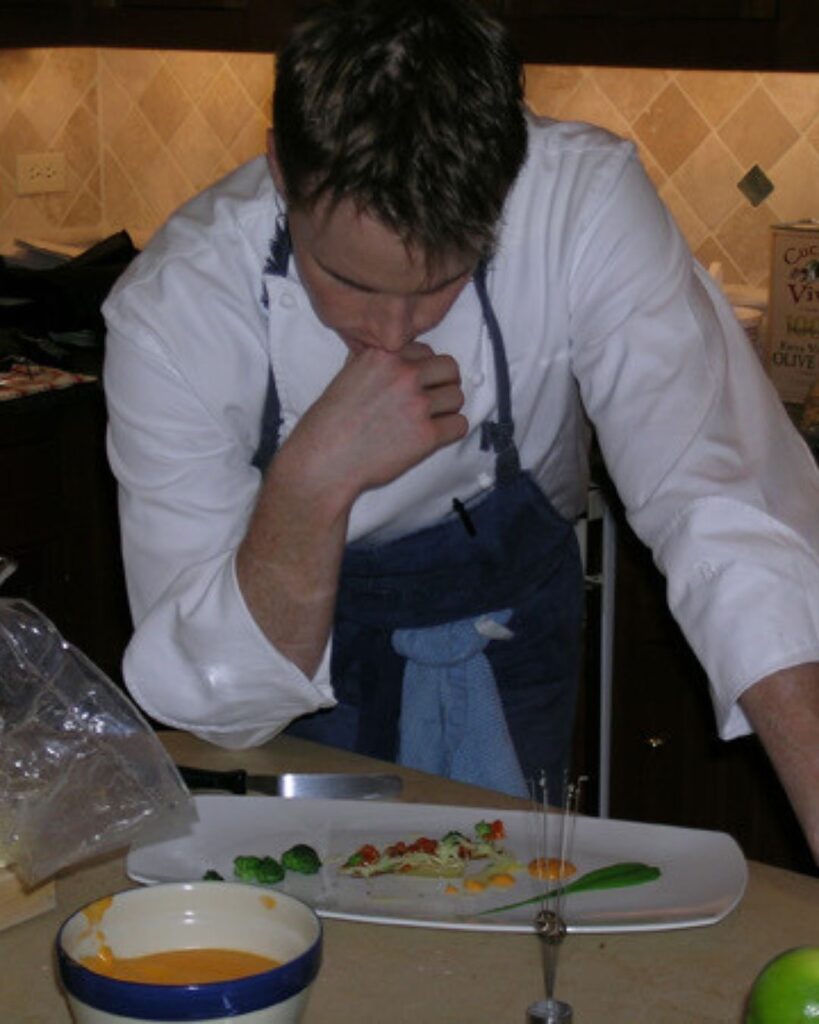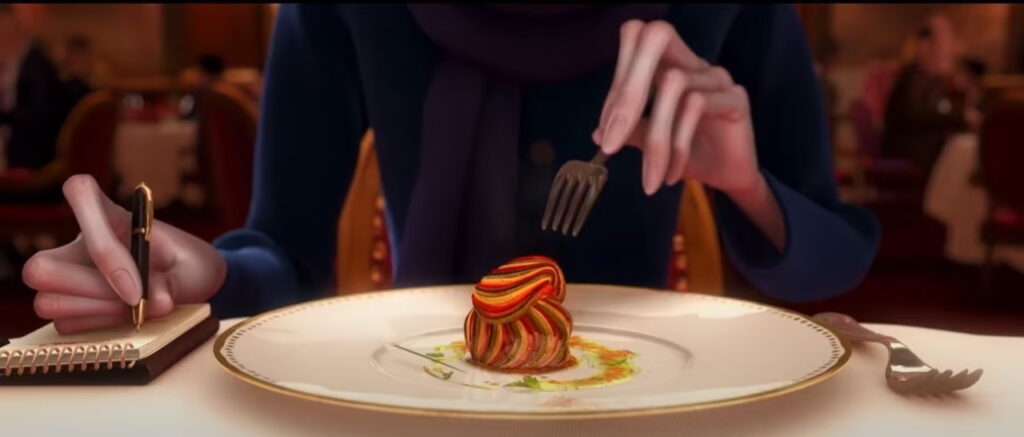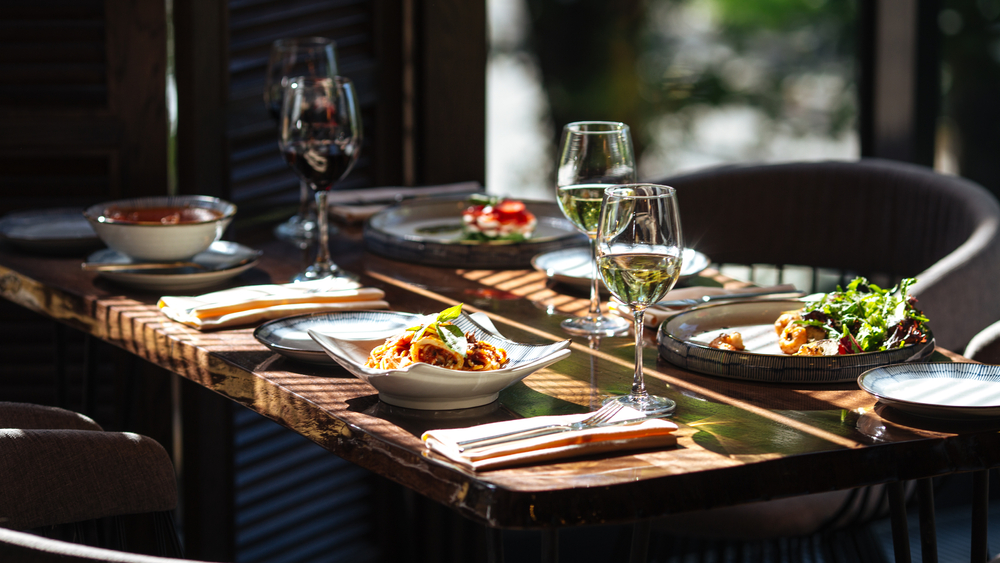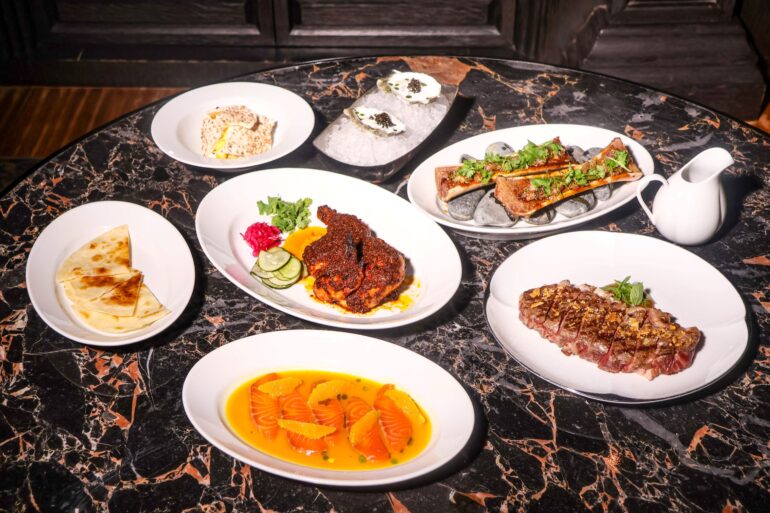A Michelin star doesn’t make a meal more meaningful, but it honors the quiet labor that makes meaning possible: the precision of a sauce, the patience of repetition, the belief that food can be art.
Street crepes wrapped in newspaper make me cry. They remind me of myself as a young woman traveling in Paris. I was broke, I was with someone I loved to my bones—we had just bought crepes and were eating them on the street. It was raining, we had one black, flimsy umbrella, and somehow the world felt safe and promising. After so many visits, Paris in that awful fall weather has never looked so beautiful to me.
Sometimes it isn’t the grand meals that we remember; it isn’t the humblest either. But it is always the food that catches us off guard, not just for how it tastes but for how it made us feel. For me, it’s crepes during that happy period in my life, but there is also the memory of how love was lost because merde happens. It brings up a kind of ache that crawls from my gut to my heart, a tenderness and longing that linger in my mind. It goes away, then it returns, catching me by surprise each time.


Whenever I see the scene of the restaurant critic Anton Ego taking his first bite of ratatouille in the eponymous movie, I nod and say, “I know, monsieur. I know.”
He sits alone at a table, a black silhouette of hardness and cynicism against the soft lighting of a Parisian restaurant. He lifts a forkful and gazes at it clinically, then with his first bite, his world collapses inward, his eyes widen, and he is transported back to when he was a young boy standing in the doorway, the glow of sun behind him and filtered through his mother’s kitchen curtains. She sets a steaming dish of ratatouille before him and touches his face softly. He takes a bite and feels the comfort, safety and love of home.
Maybe that’s the paradox of food writing: we spend so much time trying to describe flavor when what truly moves us is emotion. A perfect meal is when the food on the plate tastes like something we long for. No critic, no guide can quantify that.
It may be a movie, but it simply translates what food can do in real life, how it can evoke strong emotions and summon a version of ourselves we thought we had left behind. Ratatouille creator Brad Bird and Pixar brought this glorious scene in precise cutaways, zooming in and out, changing the color palette from grays and blacks to warm colors. I cannot watch that movie in full again because I am terrified of rodents—which is why I hate “cute” capybaras too (they are not cute)—but I can repeatedly watch that scene of the critic becoming a young boy again.
The power of food to evoke memory
Diners experiencing in real life this collapse of time is more common than you think. Chef and owner of three-Michelin star Alinea restaurant in Chicago Grant Achatz told The New Yorker in 2008 that “some diners cry during a meal at Alinea, brought back to their childhoods by the combinations of flavors and smells.”



More recently, and in humbler circumstances, a video of a Chinese policeman went viral, showing how he was overcome with emotion and shed tears at first bite because the food reminded him of his mother’s cooking. And, indeed, it was his mother’s food—she stepped into the room to surprise him, and he sobbed into her arms upon seeing her.
That recognition of taste cannot always be explained logically. Writer Susanna Zaraysky wrote in the BBC about immigrating from Leningrad (now St. Petersburg) to the US with her family when she was three. Returning to Russia at 18, she felt an “emotional distance,” until she visited a friend’s summer home and garden. “Eating the garden’s strawberries and red and black currants was like gastronomic déjà vu,” she said. “I chewed the skin and licked the round seeds off my teeth, delighting in the familiar taste of the sour juice that popped from fruits. But how did I know their taste and texture?”
Celebrity chef Nigella Lawson also wrote about crying into her food after her mother’s death. This time, food was her solace, the container for her emotion. “Cooking is the act that makes the unbearable bearable,” she wrote in her book At My Table.
Related story: Michelin Guide drops first Philippine list. Here are the country’s starred restaurants
Related story: Your quick, pocket-friendly Michelin food guide to Southeast Asia
Food isn’t a scorecard—yet somehow it is
So if food holds the power to move us, to comfort us beyond its taste, if food is memory—why do other people’s opinions matter?
Maybe that’s the paradox of food writing: we spend so much time trying to describe flavor when what truly moves us is emotion. A perfect meal isn’t about perfection at all—it’s about recognition. It’s when the food on the plate, however humble, tastes like something we long for. No critic, no guide can quantify that.
And yet, and yet…there is the revered Michelin Guide.


Ironically, it was created not to critique restaurants, but to encourage people to drive more so that they will wear out their tires and buy new ones. French tire manufacturers André and Édouard Michelin made the little red booklet in 1900, offering maps, tire repair instructions, and lists of places to eat or sleep along the road. The recommendations grew so respected that by the 1920s, Michelin introduced a star system to rate restaurants for quality.
Imagine that, a booklet made for motorists evolving into a culinary bible.
And therein lies the rub. We like to believe that taste can be measured—that there’s a universal hierarchy of what’s good, refined, or worth a Michelin star or a critic’s favorable review. We can argue that yes, of course, there is.
The best critics acknowledge that behind every taste lies a culture and memory: the sweetness of bibingka reminds someone of Christmas mornings; the bitterness of ampalaya recalls a parent’s insistence that “it’s good for you.”
Beyond that baseline of competence, everything becomes subjective, and when you have enough consensus, subjectivity starts to look like truth. That’s how reviews, ratings, and stars gain their power—when enough people agree to believe that the food tastes great (or not).
But there’s also a simpler logic: our taste buds are not neutral, they take sides, they do recognize when something’s off. Bad food is unmistakable because it’s lifeless, overcooked, or undercooked. Beyond that baseline of competence, everything becomes subjective, and when you have enough consensus, subjectivity starts to look like truth. That’s how reviews, ratings, and stars gain their power—when enough people agree to believe that the food tastes great (or not).
A Michelin star doesn’t make a meal more meaningful, but it honors the quiet labor that makes meaning possible: the precision of a sauce, the patience of repetition, the belief that food can be art even when it’s fleeting. It’s not memory it rewards, but mastery because it deserves reverence too.
Michelin and restaurant critics measure what’s harder to capture: the years of work that got the food to taste that good. Why do you think generations-old holes-in-the wall everywhere in the world are in the Michelin Guide?
So I guess stars and memories are not opposites at all. Both are born of obsession, care, and that unexplained taste that leads to an experience lasting forever. Just like those Parisian crepes I had from long ago.
Related story: In a gastronomic feast and feat, 5 Michelin-starred chefs take over Solaire’s restaurants
Related story: The Funny Lion El Nido earns Michelin Guide recommendation—here’s the story behind it








